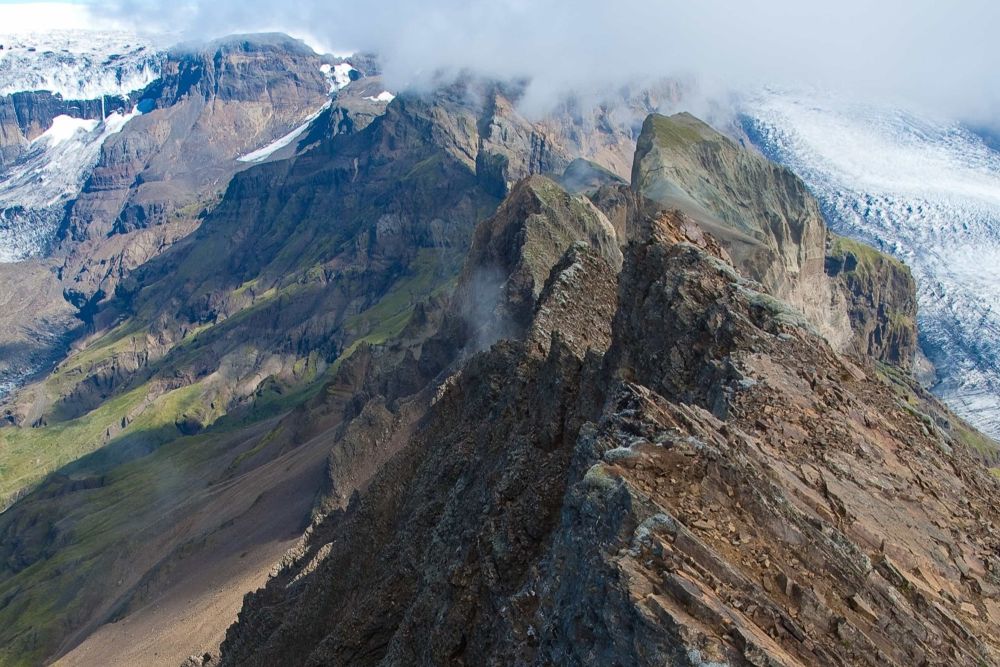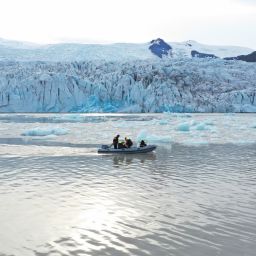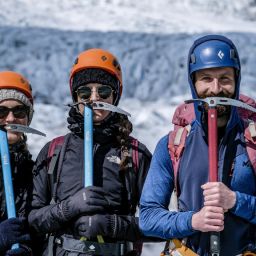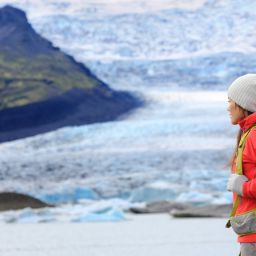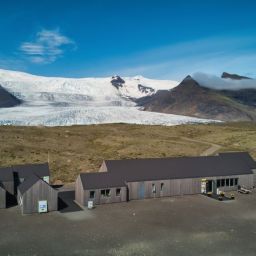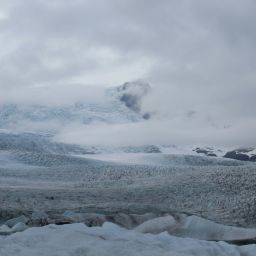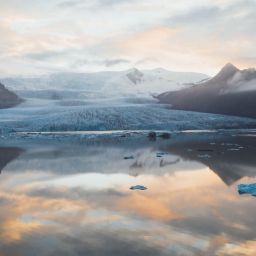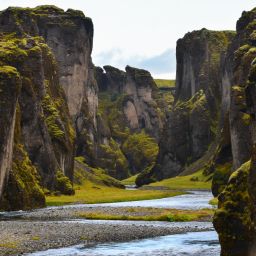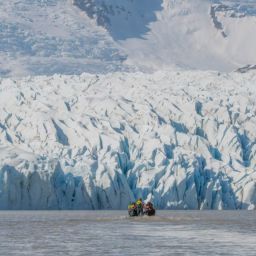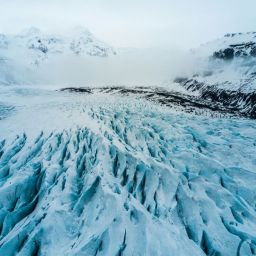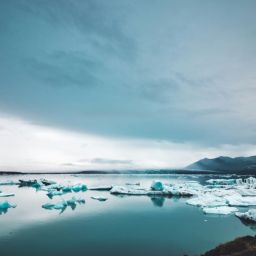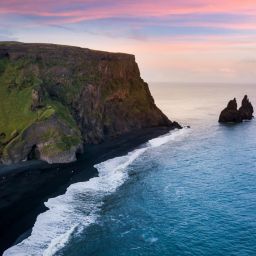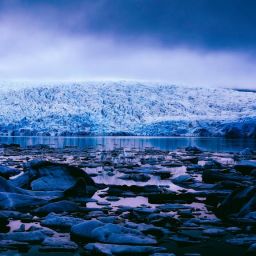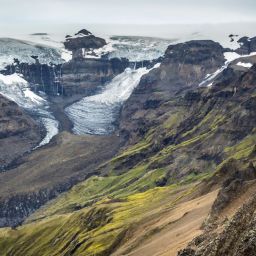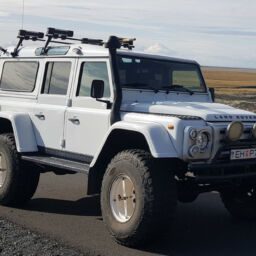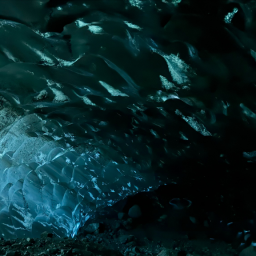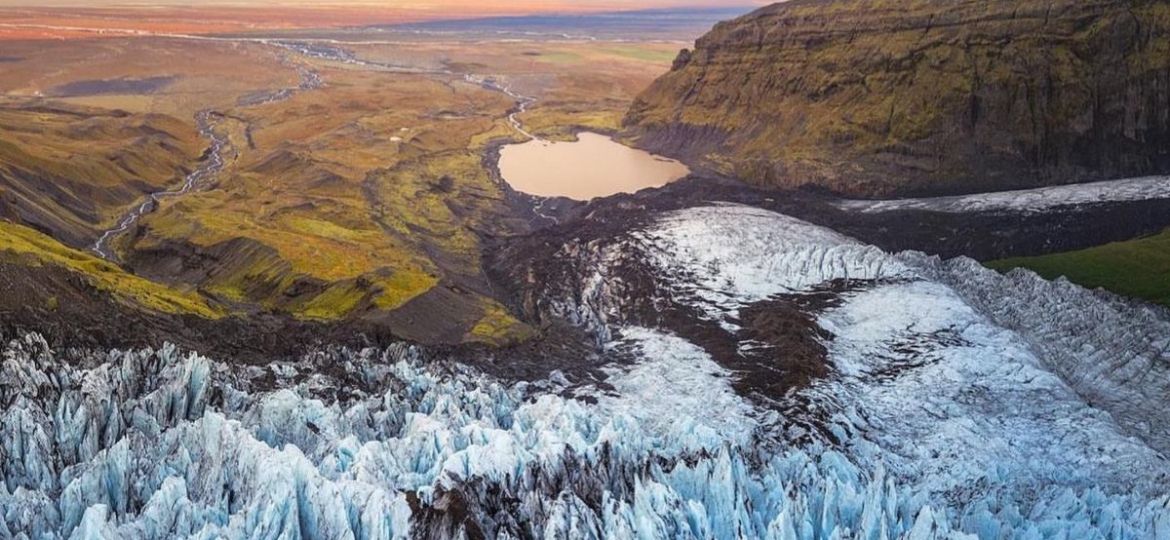
Skaftafell slots into the much larger Vatnajökull National Park, of which Fjallsárlón glacier lagoon is also a part off. This remarkable area is known for its striking scenery, including jaw-dropping waterfalls and magnificent glaciers. The terrain that you see today owes a lot to past eruptions of Öræfajökull volcano. The flow of glacial rivers coupled with intermittent floods have shaped and reshaped the area’s valleys and plains.
It’s no surprise that the place attracts photographers: year-round the views are extraordinary and if you have the patience and skill to translate that into images, you’re sure to appreciate the end result. In any season, it’s not hard to compose shots that capture the area’s stellar views, so in this article we’ll take a look at some of Skaftafell’s highlights and what you need to know if you are hoping to photograph the dramatic scenery that you’ll encounter in this standout part of Iceland.
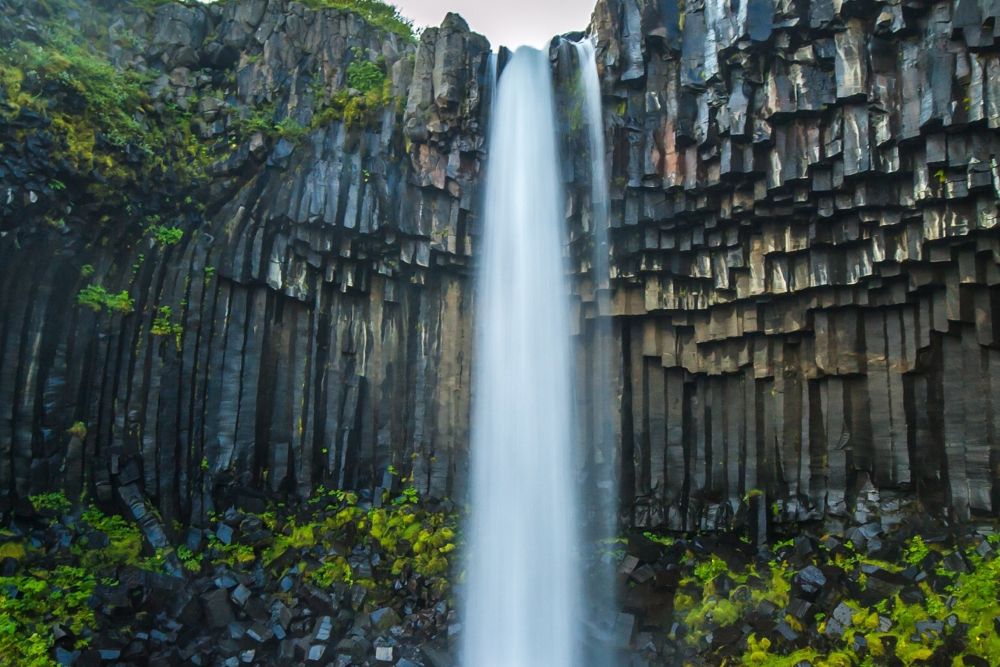
Photographing Svartifoss
Without question, Svartifoss acts like a magnet for travellers to Skaftafell National Park. This spectacular waterfall not only boasts an impressively high cliff over which the river cascades, the rock itself is magnificent. The name of this waterfall translates as “Black Falls”, a reference to the colour of the basalt. If you look carefully, you’ll see streaks of red that are the result of the rock’s substantial iron content. It’s dark brown in appearance, but when wet from the spray of the falls – don’t forget a lint-free cloth for when you need to wipe your lens – it seems black.
Colour is a big factor in photography here. Seasonal changes make this the kind of place that you can revisit time and time again. Summer is characterised by a wealth of lush green vegetation, creating an oasis-like feel. As the temperatures fall, these plants turn soft shades of orange and gold. When winter starts to bite, icicles form, hanging down over the waterfall and those basalt columns to create a natural frame for your images.
On a sunny day, photographing this dark rock against a bright sky can be a challenge. When the difference is really pronounced, you might choose to compose an image that crops out the sky and emphasises the faults and cracks in the rock itself. Experiment with different exposures, varying the settings to see if you can find a balance between the various elements that make up the scene.
Another decision you’ll need to make in terms of composition is why way to hold your camera. Opting for a landscape orientation will emphasise the natural amphitheatre created by the basalt columns which flank the falls. In contrast, choosing a portrait orientation means you can showcase not only the height of the waterfall but also any details in the plunge pool beneath it such as the swirls in the water or protruding fallen rocks. Play around with both until you achieve the types of shots that you’re happy with.
Lastly, exposure has a huge impact here. Long exposures are best for softening the water in the river to give it a silky appearance. This will emphasise the sense of movement, so the view accentuates the river’s role in sculpting this landscape. Shorter exposure, on the other hand, will capture a rainbow if one appears over the falls, which is always pleasing to look at. It comes down to personal preference, so plan to stay a while until you have the photographs you hope for.
Sel Turf House
Turf houses always make photogenic subjects, and this farm is no exception. Conveniently located close to Svartifoss it is easily combined with a longer visit to the waterfall. A farm has stood on this site since 1832 but the current buildings are a little over a century old. They are maintained by the National Museum of Iceland and were last reconstructed in the 1970s.
The buildings, both collectively and individually, are interesting to photograph. Details such as the weathered timbers, the gently swaying tufts of grass and the jumbled patterns of the foundation stones beg to be photographed at close quarters. From above, you’ll see how they are nested against the hillside and can shoot images of the countryside that extends far in front of them. However you position yourself, to be able to capture images that reflect Iceland’s history and culture is a real privilege.
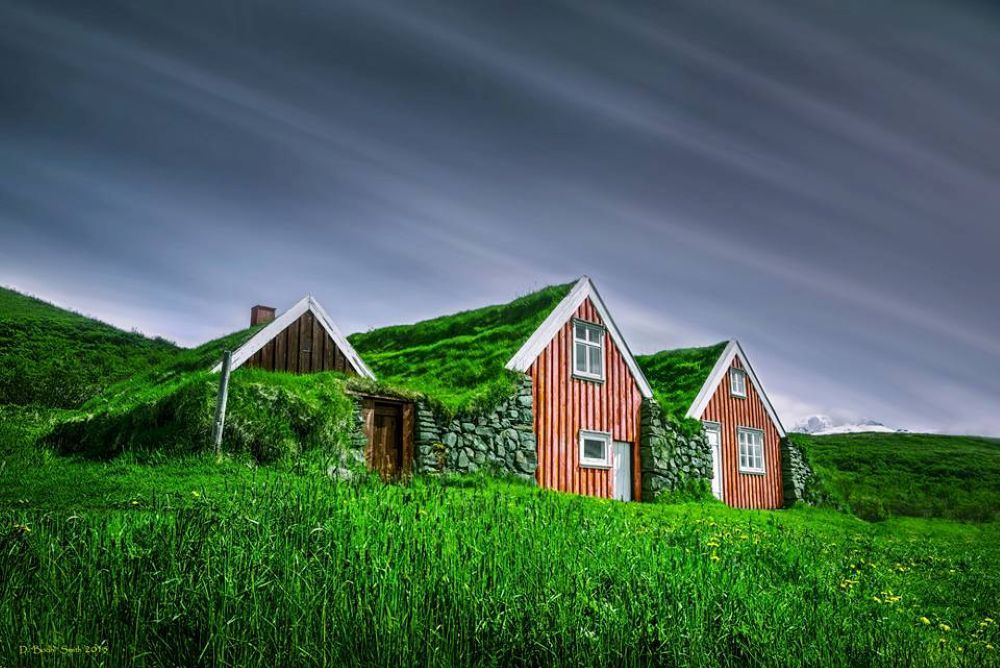
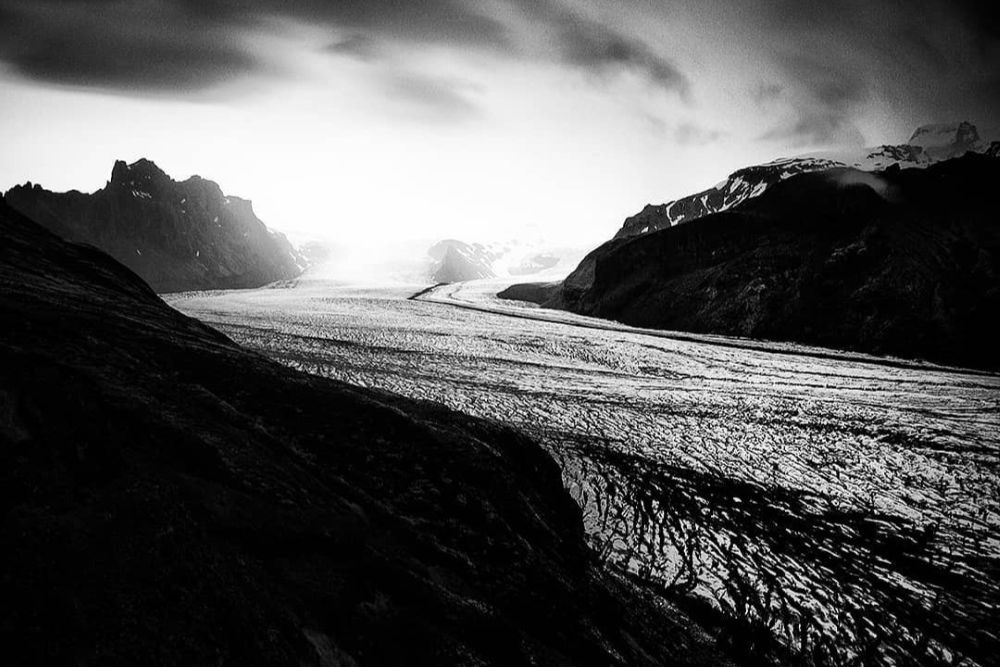
Skaftafellsjökull Glacier
Skaftafellsjökull is an outlet glacier of Vatnajökull, measuring 10km long and 2km across it’s a significant body of ice. The tongue of this lovely glacier provides another enticing location for photographers travelling through this region of Iceland. Once, the extent of the ice was far greater, and the changing landscape brings with it a multitude of opportunities for those hoping to capture it with their cameras.
As with other glaciers in Iceland, Skaftafellsjökull is retreating. Meltwater flowing out from the snout of the glacier creates lagoons and braided river channels; moraine dumped by the ice can create valuable foreground interest. It’s a landscape that’s constantly evolving, and a reminder of how hard it is for people to tame nature, even with modern technology at their disposal.
When figuring out your composition, you may find there’s a bit of a trade-off here. Zoom in and you’ll show off the patterns in the ice. Zoom out, and the scale and majesty of the glacier is clearly obvious. Play around with the positioning of your tripod and various lenses to see how this changes the perspective of your shots. Together, they’ll tell a more complete story of the processes that have transformed this incredible landscape.
One of the highlights of this location for photography is the sight of Kristinartindar mountain rising behind the glacier. If you’re lucky, the peak won’t be obscured by clouds; in windy conditions, it’s worth seeing if the cloud clears, even just for a moment. Be prepared to wait out any rain showers in your vehicle – it’s worth the investment of time when the weather improves.
Kristínartindar Mountain
Accomplished hikers might also consider tackling the Kristinartindar mountain trail, though you’ll want to pack light when it comes to lenses and other gear. It’s a 17.9km route that incorporates a number of viewpoints, such as Sjónarsker and Sjónarnípa. From such lofty vantage points, you’ll enjoy breathtaking views over the surrounding countryside, as well as over Vatnajökull glacier. The 3,7km long Skaftafellsjökull Trail is much easier, with much of the route on paved or gravel surfaces.
If you’re en route to the glacier lagoons at Fjallsárlón and Jökulsárlón, you’ll definitely want to allow time to photograph the scenery at nearby Skaftafell. Be sure to respect nature, sticking to paths and remaining on the permitted side of areas that are fenced off for their protection.
